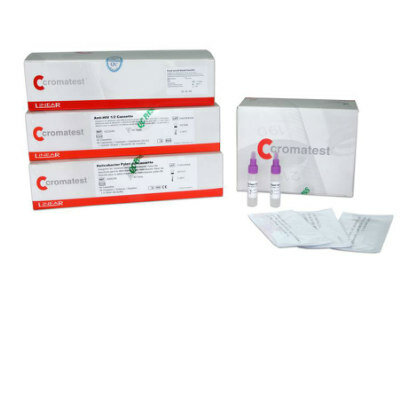Infection Can Lead to False Negatives for Cerebrospinal Fluid β-2 Transferrin
|
By LabMedica International staff writers Posted on 21 Oct 2014 |
![Image: Scanning Electron Micrograph of Streptococcus pneumoniae by R. Facklam, J. Carr. Cerebrospinal fluid (CSF) β-2 transferrin detection decreases after inoculation with live or ciprofloxacin-inactived S. pneumoniae. This may be due to passive adsorption via distinctive features of the S. pneumoniae cell wall not present in the other bacterial species examined (Photo courtesy of MicrobeWiki and the CDC – [US] Centers for Disease Control and Prevention). Image: Scanning Electron Micrograph of Streptococcus pneumoniae by R. Facklam, J. Carr. Cerebrospinal fluid (CSF) β-2 transferrin detection decreases after inoculation with live or ciprofloxacin-inactived S. pneumoniae. This may be due to passive adsorption via distinctive features of the S. pneumoniae cell wall not present in the other bacterial species examined (Photo courtesy of MicrobeWiki and the CDC – [US] Centers for Disease Control and Prevention).](https://globetechcdn.com/mobile_labmedica/images/stories/articles/article_images/2014-10-21/MMS-117.jpg)
Image: Scanning Electron Micrograph of Streptococcus pneumoniae by R. Facklam, J. Carr. Cerebrospinal fluid (CSF) β-2 transferrin detection decreases after inoculation with live or ciprofloxacin-inactived S. pneumoniae. This may be due to passive adsorption via distinctive features of the S. pneumoniae cell wall not present in the other bacterial species examined (Photo courtesy of MicrobeWiki and the CDC – [US] Centers for Disease Control and Prevention).
Researchers have found that the presence of Streptococcus pneumoniae in cerebrospinal fluid (CSF) can lead to false-negative β-2 transferrin (β2TRNSF) test results and misdiagnosis that may detrimentally affect healthcare decisions for patients.
Free passage of bacterial flora from the nasal cavity and paranasal sinuses through a CSF fistula into the cranium may pose increased risk for meningitis and encephalitis. Thus, early diagnosis and treatment of CSF leakage could decrease the risk of a lethal infection. Although β2TRNSF is a highly reliable marker for diagnosing cases of CSF leakage (even in CSF contaminated with blood or other secretions)—it has not been examined in the presence of central nervous system bacterial infection.
In a prospective analysis, a team led by Nir Hirshoren, MD, at the Hebrew University School of Medicine–Hadassah Medical Center (Jerusalem, Israel) examined β2TRNSFdetection in artificially contaminated CSF as a research model. Sterile (tested for sterility) CSF was drawn from 9 prospectively-recruited neurosurgical patients. CSF samples were contaminated in vitro by controlled spiking with bacteria, chosen for ability to cause meningeal neurosurgical-related infections: Streptococcus pneumoniae, methicillin-sensitive Staphylococcus aureus (MSSA), Staphylococcus epidermidis, or Pseudomonas aeruginosa.
β2TRNSF analysis was performed using qualitative immunoblotting electrophoresis and quantitative enzyme-linked immunosorbent assay (ELISA). Two time points were examined, following immediate inoculation (t0 ) and following an overnight incubation (t18 ), over various bacterial-load concentrations. In this study, only S. pneumoniae was observed to significantly affect β2TRNSF detection. At both the t0 and t18 time points following S. pneumoniae inoculation, β2TRNSF was not detected when immunoblotting electrophoresis was used; quantitative analysis using ELISA demonstrated significant β2TRNSF concentration decrease.
A secondary objective of the study was to explore whether the disappearance of β2TRNSF in the assays is due to a passive or active mechanism. The researchers suspected that in some cases of bacterial infections, β2TRNSF might be adsorbed, degraded, or consumed by bacteria. CSF inoculated with S. pneumoniae was also examined in the presence of the non-cell-wall antibiotic ciprofloxacin, which led to the same results. Since β2TRNSF detection decreased also with inactivated (i.e. + ciprofloxacin) S. pneumoniae, a passive process was suggested, possibly due to adsorption via distinctive features of the S. pneumoniae cell wall not present in the other species examined.
The authors note that although the study was limited by a small sample number (n=9), potential bias was largely overcome by exploring different bacterial loads, examining diverse clinical bacterial species, and using two reliable assays. Further investigation in the clinical setting is needed, however the results indicate that, in the presence of a S. pneumoniae cerebral nervous system infection, using a β2TRNSF test for CFS leak detection may be deceiving and should be interpreted cautiously.
The authors further caution that the importance of β2TRNSF assays is limited to borderline, clinical-uncertainty cases. In other cases, a β2TRNSF negative result may not change a clinical decision regardless of CSF S. pneumoniae presence, and appropriate imaging modalities and surgery may be warranted anyway.
The study was reported by Korem M. et al. in the journal Laryngoscope, September 29, 2014, online ahead of print.
Related Links:
Hebrew University School of Medicine – Hadassah Medical Center
Hebrew University Hadassah Medical School
Free passage of bacterial flora from the nasal cavity and paranasal sinuses through a CSF fistula into the cranium may pose increased risk for meningitis and encephalitis. Thus, early diagnosis and treatment of CSF leakage could decrease the risk of a lethal infection. Although β2TRNSF is a highly reliable marker for diagnosing cases of CSF leakage (even in CSF contaminated with blood or other secretions)—it has not been examined in the presence of central nervous system bacterial infection.
In a prospective analysis, a team led by Nir Hirshoren, MD, at the Hebrew University School of Medicine–Hadassah Medical Center (Jerusalem, Israel) examined β2TRNSFdetection in artificially contaminated CSF as a research model. Sterile (tested for sterility) CSF was drawn from 9 prospectively-recruited neurosurgical patients. CSF samples were contaminated in vitro by controlled spiking with bacteria, chosen for ability to cause meningeal neurosurgical-related infections: Streptococcus pneumoniae, methicillin-sensitive Staphylococcus aureus (MSSA), Staphylococcus epidermidis, or Pseudomonas aeruginosa.
β2TRNSF analysis was performed using qualitative immunoblotting electrophoresis and quantitative enzyme-linked immunosorbent assay (ELISA). Two time points were examined, following immediate inoculation (t0 ) and following an overnight incubation (t18 ), over various bacterial-load concentrations. In this study, only S. pneumoniae was observed to significantly affect β2TRNSF detection. At both the t0 and t18 time points following S. pneumoniae inoculation, β2TRNSF was not detected when immunoblotting electrophoresis was used; quantitative analysis using ELISA demonstrated significant β2TRNSF concentration decrease.
A secondary objective of the study was to explore whether the disappearance of β2TRNSF in the assays is due to a passive or active mechanism. The researchers suspected that in some cases of bacterial infections, β2TRNSF might be adsorbed, degraded, or consumed by bacteria. CSF inoculated with S. pneumoniae was also examined in the presence of the non-cell-wall antibiotic ciprofloxacin, which led to the same results. Since β2TRNSF detection decreased also with inactivated (i.e. + ciprofloxacin) S. pneumoniae, a passive process was suggested, possibly due to adsorption via distinctive features of the S. pneumoniae cell wall not present in the other species examined.
The authors note that although the study was limited by a small sample number (n=9), potential bias was largely overcome by exploring different bacterial loads, examining diverse clinical bacterial species, and using two reliable assays. Further investigation in the clinical setting is needed, however the results indicate that, in the presence of a S. pneumoniae cerebral nervous system infection, using a β2TRNSF test for CFS leak detection may be deceiving and should be interpreted cautiously.
The authors further caution that the importance of β2TRNSF assays is limited to borderline, clinical-uncertainty cases. In other cases, a β2TRNSF negative result may not change a clinical decision regardless of CSF S. pneumoniae presence, and appropriate imaging modalities and surgery may be warranted anyway.
The study was reported by Korem M. et al. in the journal Laryngoscope, September 29, 2014, online ahead of print.
Related Links:
Hebrew University School of Medicine – Hadassah Medical Center
Hebrew University Hadassah Medical School
Latest Microbiology News
- New Test Diagnoses Bacterial Meningitis Quickly and Accurately
- Handheld Device Delivers Low-Cost TB Results in Less Than One Hour
- New AI-Based Method Improves Diagnosis of Drug-Resistant Infections
- Breakthrough Diagnostic Technology Identifies Bacterial Infections with Almost 100% Accuracy within Three Hours
- Innovative ID/AST System to Help Diagnose Infectious Diseases and Combat AMR
- Gastrointestinal Panel Delivers Rapid Detection of Five Common Bacterial Pathogens for Outpatient Use
- Rapid PCR Testing in ICU Improves Antibiotic Stewardship
- Unique Genetic Signature Predicts Drug Resistance in Bacteria
- Unique Barcoding System Tracks Pneumonia-Causing Bacteria as They Infect Blood Stream
- Rapid Sepsis Diagnostic Test Demonstrates Improved Patient Care and Cost Savings in Hospital Application
- Rapid Diagnostic System to Detect Neonatal Sepsis Within Hours
- Novel Test to Diagnose Bacterial Pneumonia Directly from Whole Blood
- Interferon-γ Release Assay Effective in Patients with COPD Complicated with Pulmonary Tuberculosis
- New Point of Care Tests to Help Reduce Overuse of Antibiotics
- 30-Minute Sepsis Test Differentiates Bacterial Infections, Viral Infections, and Noninfectious Disease
- CRISPR-TB Blood Test to Enable Early Disease Diagnosis and Public Screening
Channels
Clinical Chemistry
view channel
First Comprehensive Syphilis Test to Definitively Diagnose Active Infection In 10 Minutes
In the United States, syphilis cases have surged by nearly 80% from 2018 to 2023, with 209,253 cases recorded in the most recent year of data. Syphilis, which can be transmitted sexually or from mother... Read more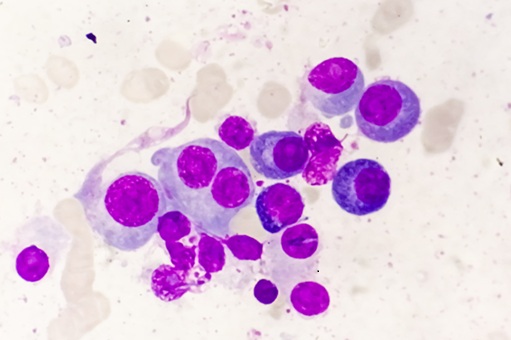
Mass Spectrometry-Based Monitoring Technique to Predict and Identify Early Myeloma Relapse
Myeloma, a type of cancer that affects the bone marrow, is currently incurable, though many patients can live for over 10 years after diagnosis. However, around 1 in 5 individuals with myeloma have a high-risk... Read moreMolecular Diagnostics
view channel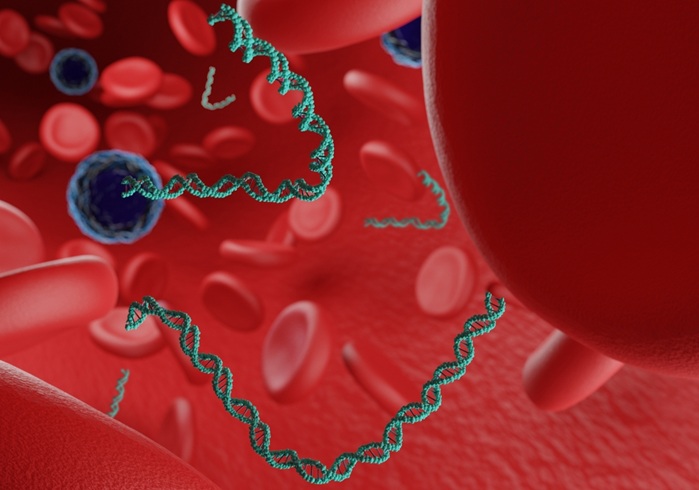
Liquid Biopsy Assay Detects Recurrence in CRC Patients Prior to Imaging
The detection of circulating tumor DNA (ctDNA) after treatment is a strong indicator of recurrence in colorectal cancer (CRC), but it often goes undetected due to the low traces of ctDNA present in the blood.... Read more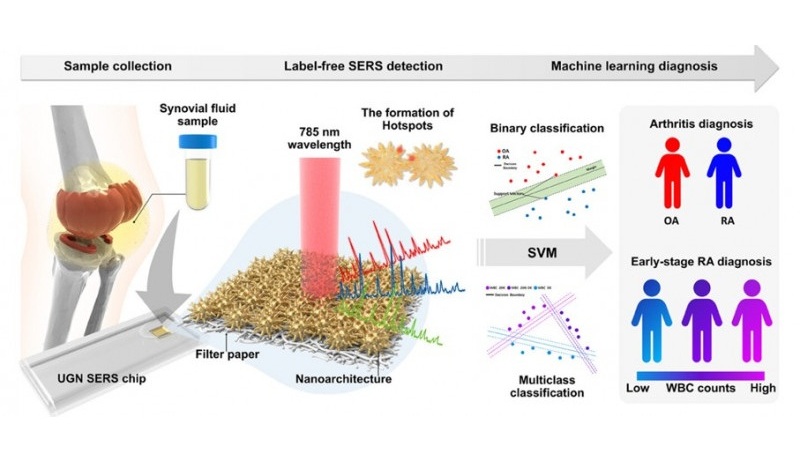
Ultra Fast Synovial Fluid Test Diagnoses Osteoarthritis and Rheumatoid Arthritis In 10 Minutes
Studies indicate that more than 50% of individuals aged 65 and older experience symptoms of osteoarthritis, while rheumatoid arthritis is a serious chronic condition affecting approximately 1 in 100 people... Read moreHematology
view channel
New Scoring System Predicts Risk of Developing Cancer from Common Blood Disorder
Clonal cytopenia of undetermined significance (CCUS) is a blood disorder commonly found in older adults, characterized by mutations in blood cells and a low blood count, but without any obvious cause or... Read more
Non-Invasive Prenatal Test for Fetal RhD Status Demonstrates 100% Accuracy
In the United States, approximately 15% of pregnant individuals are RhD-negative. However, in about 40% of these cases, the fetus is also RhD-negative, making the administration of RhoGAM unnecessary.... Read moreImmunology
view channel
Stem Cell Test Predicts Treatment Outcome for Patients with Platinum-Resistant Ovarian Cancer
Epithelial ovarian cancer frequently responds to chemotherapy initially, but eventually, the tumor develops resistance to the therapy, leading to regrowth. This resistance is partially due to the activation... Read more
Machine Learning-Enabled Blood Test Predicts Immunotherapy Response in Lymphoma Patients
Chimeric antigen receptor (CAR) T-cell therapy has emerged as one of the most promising recent developments in the treatment of blood cancers. However, over half of non-Hodgkin lymphoma (NHL) patients... Read morePathology
view channel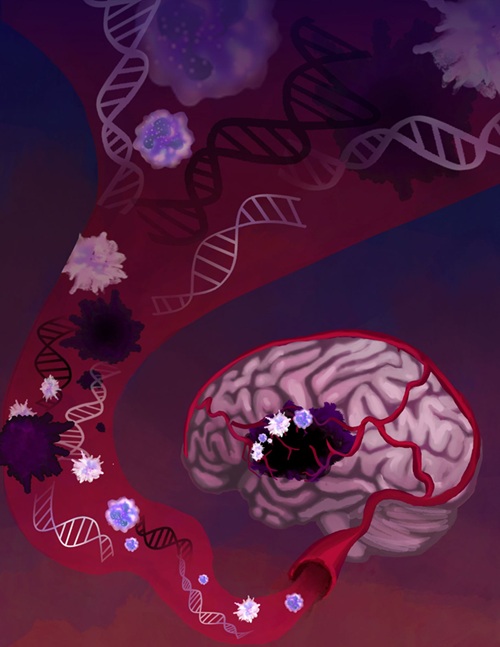
AI-Based Liquid Biopsy Approach to Revolutionize Brain Cancer Detection
Detecting brain cancers remains extremely challenging, with many patients only receiving a diagnosis at later stages after symptoms like headaches, seizures, or cognitive issues appear. Late-stage diagnoses... Read more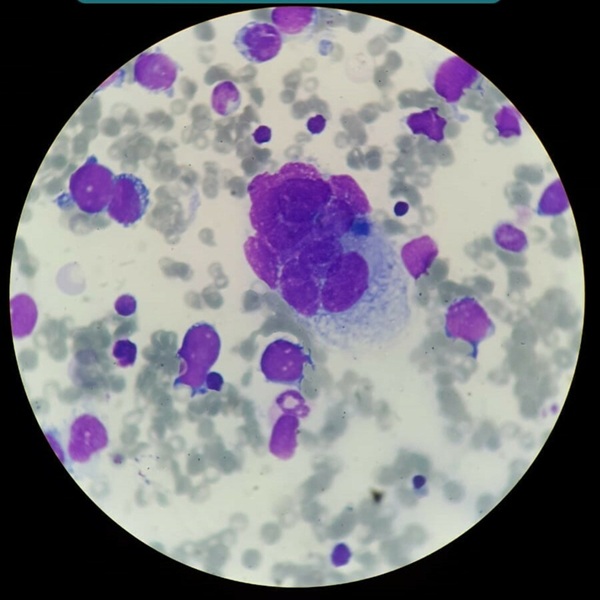
AI-Driven Analysis of Digital Pathology Images to Improve Pediatric Sarcoma Subtyping
Pediatric sarcomas are rare and diverse tumors that can develop in various types of soft tissue, such as muscle, tendons, fat, blood or lymphatic vessels, nerves, or the tissue surrounding joints.... Read more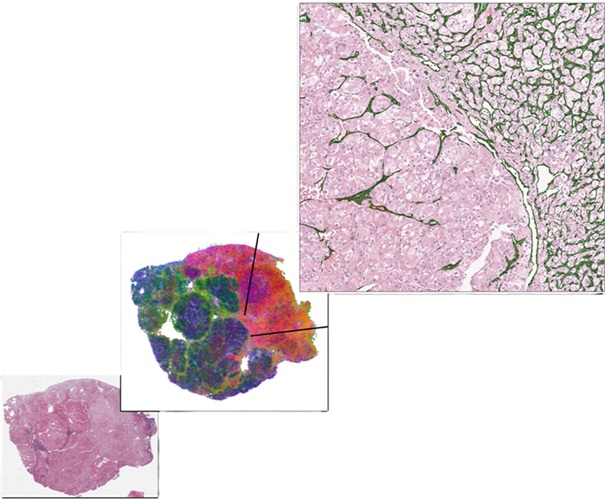
AI-Based Model Predicts Kidney Cancer Therapy Response
Each year, nearly 435,000 individuals are diagnosed with clear cell renal cell carcinoma (ccRCC), making it the most prevalent subtype of kidney cancer. When the disease spreads, anti-angiogenic therapies... Read more
Sensitive and Specific DUB Enzyme Assay Kits Require Minimal Setup Without Substrate Preparation
Ubiquitination and deubiquitination are two important physiological processes in the ubiquitin-proteasome system, responsible for protein degradation in cells. Deubiquitinating (DUB) enzymes contain around... Read moreTechnology
view channel
Light Signature Algorithm to Enable Faster and More Precise Medical Diagnoses
Every material or molecule interacts with light in a unique way, creating a distinct pattern, much like a fingerprint. Optical spectroscopy, which involves shining a laser on a material and observing how... Read more
Disposable Microchip Technology Could Selectively Detect HIV in Whole Blood Samples
As of the end of 2023, approximately 40 million people globally were living with HIV, and around 630,000 individuals died from AIDS-related illnesses that same year. Despite a substantial decline in deaths... Read more
Pain-On-A-Chip Microfluidic Device Determines Types of Chronic Pain from Blood Samples
Chronic pain is a widespread condition that remains difficult to manage, and existing clinical methods for its treatment rely largely on self-reporting, which can be subjective and especially problematic... Read more
Innovative, Label-Free Ratiometric Fluorosensor Enables More Sensitive Viral RNA Detection
Viruses present a major global health risk, as demonstrated by recent pandemics, making early detection and identification essential for preventing new outbreaks. While traditional detection methods are... Read moreIndustry
view channel
Cepheid and Oxford Nanopore Technologies Partner on Advancing Automated Sequencing-Based Solutions
Cepheid (Sunnyvale, CA, USA), a leading molecular diagnostics company, and Oxford Nanopore Technologies (Oxford, UK), the company behind a new generation of sequencing-based molecular analysis technologies,... Read more
Grifols and Tecan’s IBL Collaborate on Advanced Biomarker Panels
Grifols (Barcelona, Spain), one of the world’s leading producers of plasma-derived medicines and innovative diagnostic solutions, is expanding its offer in clinical diagnostics through a strategic partnership... Read more




